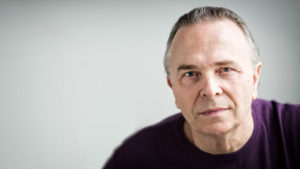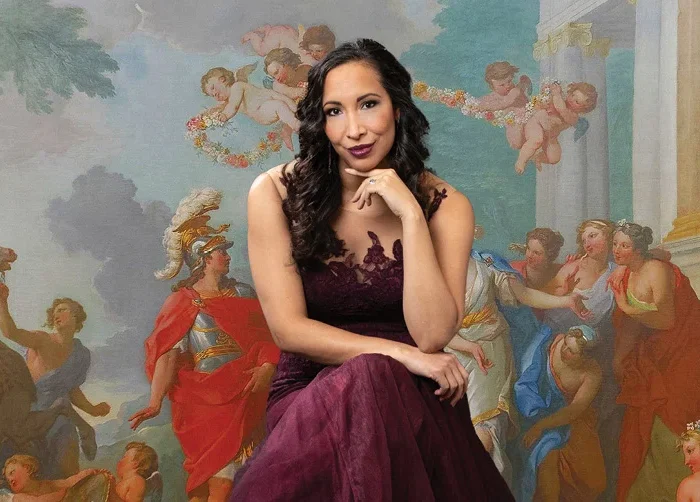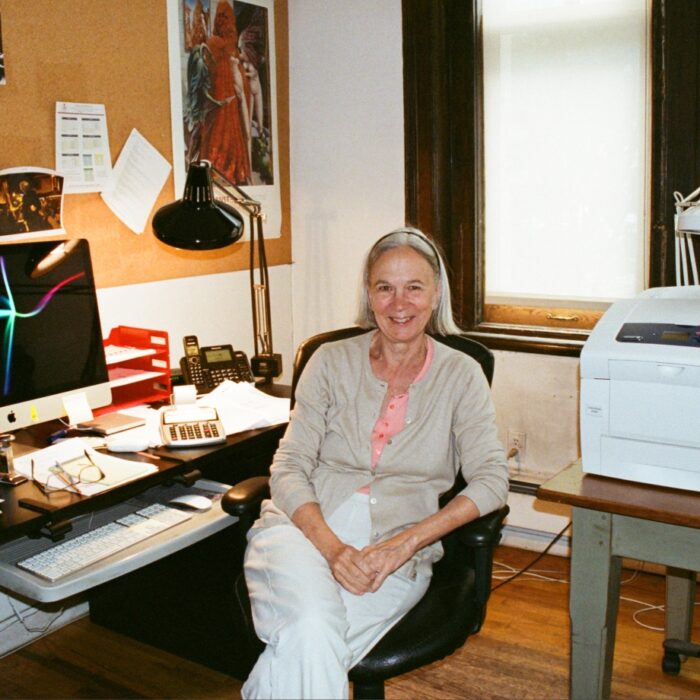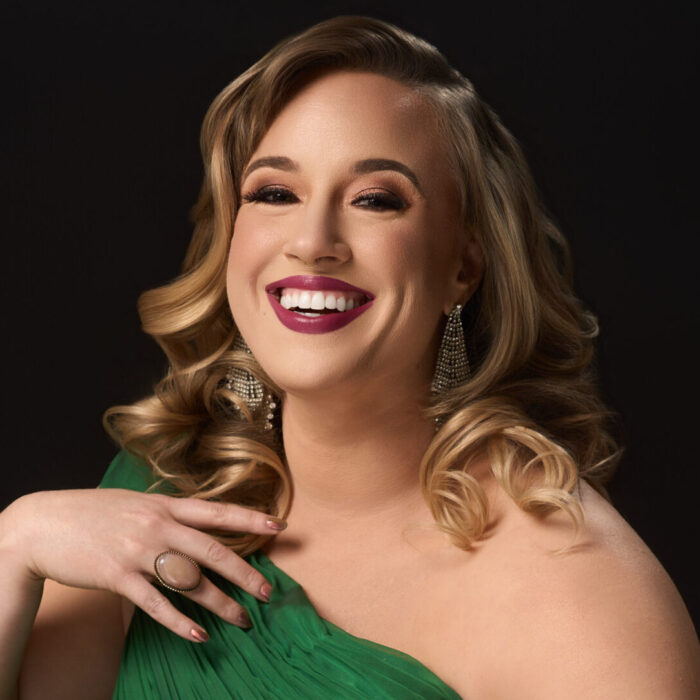
Q & A: Mark Elder on Donizetti, ‘Il Paria,’ Rare Works & his Tenure with Opera Rara
By Francisco SalazarFor eight years, Sir Mark Elder has been the Artistic Director of Opera Rara, a London-based opera company and recording label specializing in recording and performing forgotten operatic repertoire.
In this capacity, Elder has discovered new pieces and has recorded and performed such works as Donizetti’s “Dom Sebastien,” “Imelda di Lambertazzi,” “Linda di Chamounix,” “Maria di Rohan,” “Les Martyrs” and Rossini’s “Semiramide.” All the recordings have garnered praise for his passionate and elegant conducting.
Having spent eight years discovering the Bel Canto works, Elder’s tenure with Opera Rara recently came to an end. However, before finishing his work with the company, Elder recorded “Il Paria,” another rare Donizetti that had only been recorded once before.
OperaWire had a chance to speak with the conductor about “Il Paria,” casting Donizetti and discovering the rare gems of the Bel Canto repertoire.
OperaWire: When did you come across “Il Paria” and when did you decide that this was the next opera to record for Opera Rara?
Mark Elder: My whole experience of being the artistic director of Opera Rara has been enormously influenced by my friendship and work collaboration with Roger Parker. Roger Parker used to be a musician and professor at Cambridge and then in Kings, London. And he is an authority in early 19th-century Italian opera.
He is one of the general editors of the Donizetti critical editions and we’ve always had a great friendship and he had said to me when I started at Opera Rara, “You know there are certain projects that are crying out to be done.” And one of the first was to do “Les Martyrs,” a French grand opera that nobody knew and had never been played. It was very exciting doing that because it’s a very good piece.
And around that time one or two years into my time at Opera Rara, he said, “You know there is a piece that we ought to look at because I think it’s got some very special things in it. Nobody knows about it and it’s called ‘Il Paria’ and it’s set in India and there is a terrible performance on CD that is so bad you must not listen to it.” And I couldn’t get through it. It made me so depressed and I thought the piece was so bad. And that’s the thing with this music. If you don’t do it well, it does not come across as good music.
I loved the process of getting to know “Paria.” Roger had it in the back of his mind that he wanted to find out more about it and he had seen the manuscript and he started to work out what was there. I have worked with him and I spent hours looking at those manuscripts. But that is where you start. The excitement of the piece comes from looking at the manuscripts. Donizetti wrote music so fast that it is very tricky to work out. But Roger and I got excited about what was so unusual about this piece and its title. It’s a very unusual title for a tragic opera.
The crucial moment for me was when the first edition of the new critical edition arrived on my desk. It was full of mistakes and incomplete things but at least it could mean that I could see what the piece had to offer. And that is when I got very excited.
OW: “Il Paria” premiered in 1829, before Donizetti’s big break. Tell me about the piece and how the writing differs from other Donizetti works you have conducted?
ME: In 1829, he was arriving in Naples to take on this job and this was the first opportunity he had to write a piece for these great singers and actors who were well known in the theater there. I think the nature of the libretto is full of confusion and inconsistencies but the nature of the libretto made him see that it wasn’t going to be a piece of many numbers. There are few numbers and each number is very well architecturally paced. Many of the numbers have long instrumental introductions which would be a challenge for a staged production. I have a sense that he stretched himself. It is a piece set in India about religious intolerance and he didn’t go to India. But I think the religious power of the characters must have made a big impact on him as well as the romantic passions of the characters. It seems that he focused on the potential of the subject to write a piece that would introduce him to great singers and the public through his music. He wanted it to be a calling card and he focused on how he could make a big impact when writing this piece and he said afterward that he was disappointed that it didn’t go well. Donizetti said that it was a special and unusual piece and he was proud of it.
Before this piece, he had a great experience in writing comedies and farces and romance and tragedies. This piece was slightly different because it had an intense romantic thread to it but it was laid out differently. For example, the chorus is a body of people and they don’t react with the principles. They are a great religious folk town of people. The writing is monolithic and very striking. There is a ritualistic form. He took some risks and but inevitably the confusion in the libretto would count against the piece. But I think that despite his comparative immaturity he was three or four operas before “Anna Bolena” and despite the difficulties with the libretto, it is an immensely enjoyable opera. It is not boring and it has a wonderful sense of pace, melody, and some really gorgeous orchestral writing.
The very opening of the piece is unusual as it implies a more romantic and exotic feel and then the whole thing dies down. Then Act one begins with this calm sunrise early dawn music with the priests celebrating the arrival of the sun. And I think there is great beauty and originality in this music. I don’t know all the operas that came before that and I don’t think the colors are similar.
OW: Donizetti voices have always been difficult to figure out and some operas don’t have specific voice types. Tell me about the singers that you chose for this opera and what made them perfect for the roles?
ME: We all feel really confident that arguably the biggest reason why this opera has never been known is that the roles that were written for Rubini are so demanding that to find people that can live up to them is very difficult to find. The style of singing is very little known and Rubini was a great poet and this part was so tailored to him and Donizetti must have listened to him so much. To find somebody who could do it was very taxing for us and it was really late on that we managed to persuade René Barbera to make time for it because he didn’t know the piece and didn’t realize how exciting it could be.
I think what is so important about the writing for the tenor is the idea that the heights of the phrases are in a specific tessitura. The voice can happily go from the middle to this stratospheric high area and stay there and make beautiful music. René is one of the very few tenors in the world who could really do that. Most of them are so trained to have the squillo in petto and to want to show off their high notes, that when they go up there, they are not happy. With René, it sounds like an instrumentalist. I think he can do it.
For the soprano, I think it’s more clear that it’s more generic and that there are more roles like it. I wanted Albina to do something different after we did “Semiramide” because “Semiramide” was a departure for her and it stretched her. For that opera, I begged her to find darkness at the bottom of her voice and to open that part of her voice. “Semiramide” was written for a soprano running out of top notes and it was taxing for Albina to sing that. So I wanted to do something vocally conventional but there are so many things that are unconventional the way the music in “Il Paria” is written. Her opening with the chorus is so interesting and so beautiful and it has a melancholic passion that is so lovely. She loved doing it and found it easy in relation to “Semiramide.” So I felt confident that it would be a good project for both of us.
The other part is the title role and the character is an older person. Donizetti wrote a role for a baritone that wasn’t a baritone nor a bass. It was more like a basso cantante. It is a very interesting part and I didn’t think there was anyone suitable for it. The best example I would have given was Bryn Terfel 20 years ago. Somebody who is a baritone with darkness in the middle of the voice. You need this darkness because of the emotion that he has. It’s an amazing role and this young guy we found, Misha Kiria, had never done anything like it. Kiria had a huge success singing “Falstaff” in Madrid and Jesus Iglesias, the man who helps me with the casting, suggested the bass.
Iglesias runs the Palau de les Arts and he was a great help to me because he was in touch with a lot of singers who might love the opportunity of doing something like it. One of the problems of Opera Rara is by definition that no one will know the piece. So to persuade them to commit to doing a project where there are no recordings of the piece and the scores are still being made is very hard. Artists have to commit to the project and with every opera, there have always been one or two singers who cancel because they find they don’t have time to do it. The best singers are busy so casting this part was not easy. Kiria is a young singer with a beautiful voice but not enough experience so we did a lot of work with him to get him ready.
OW: Donizetti’s operas are all so radically different and often require wildly different types of voices. You can see this in the Tudor Queens trilogy where each of the Queens requires a very different vocal style. Do you think there is a specific way to cast a Donizetti opera?
ME: I am not sure there is one way of doing it. What we do is we discuss the demand of the piece and we talk to Jesus about it and consider who would be and what are the requirements of the role. Jesus would look at it and see who is around. You see we can’t afford the most expensive singers and the budget is always very restrictive and it has to be enticing.
The biggest part of doing these is that no one else in the world is doing these well-rehearsed studio-recorded operas. All the operas that come out on CD are from live performances. But what I wanted to do with Opera Rara was to show the Bel Canto style as well-rehearsed and perfected in the time that I have. So you need to have people that are prepared to have the time aside to work with the piano and with the recording and then rest and do the public concert. I don’t think there is a right way but if you find a few singers who you trust and who you believe will be excited by the project, then you need to do the best with them.
OW: When the opera was performed at the Barbican two years ago, what was the audience’s reaction?
ME: I think that in these last years we have built up a relationship with the public that is more knowledgeable. When I arrived with the company there was ignorance about what Opera Rara was. The amount of financial support that the previous administration had was incredible. They never needed to raise money so it influenced which operas they did. The money was there and they put them out and if they got a performance it didn’t matter. I realized that I had to raise every penny and I couldn’t afford to put on a dud or a routine piece. The audience realizes this and I think the crucial moment was the “Les Martyrs” concert performance that we did in London. We had a fantastic audience and enthusiasm and that continued over the years.
During performances of “Il Paria,” I decided to speak with the audience about the piece before the orchestra came on stage just to prepare them for what was to come and what so unusual about the piece. I explained why these three big roles had such extraordinary characteristics and technical demands. I told some of the plot and I thought the audience was with us from the beginning. It was just lovely and as soon they could respond they gave us a wonderful ovation and I think that gave the cast such courage to go on. These pieces need incredible courage. It’s exciting when it’s good and when it’s not, one is aware of the technical deficiencies. I have always tried to cast and make sure every role is cast well and that is also an important part of Opera Rara.
OW: When you do an opera with enough rehearsal time, what do you think the singers get out of it?
ME: With a piece that nobody knows, you have to know everything about it and they have to know the whole theme and their parts and the meaning and inner meaning of the words. Sometimes the text because it’s in old Italian, is not so easy to understand and you have to work with an Italian coach to make sure everyone understands why they sing certain ways and why they say it. And then you find the way to interpret it. I love all that work because then you get excitement in the cast. They all become united in the same direction.
OW: Your tenure with Opera Rara has come to an end and you left so many great recordings. What did you learn from working with Opera Rara and what are some of your favorite moments working with the company?
ME: What I love is realizing the potential of a piece that nobody knows. I always start at the basics. I remember with “Linda di Chamonix,” a score that I love and I will never forget that when I started to read the pages like a novel, I realized what we had to do to do it beautifully and what voices it needed. That for me is incredibly exciting and the muscology stops and the art and craft begins. I sit between the two because I correct the score and I always find things that I believe are not right and I go back to the manuscript.
Then I have to make it happen with the orchestra and the singers and I love that. I love seeing how far we can get and I love seeing how the cast is able to live up to it. I love seeing what their technique will give them and how well prepared they are or how well they will respond to it. That process was really beautiful when we did “Linda di Chamonix.” I have done nine or 10 Donizetti works with the company but I have never been asked to conduct a single Donizetti opera in a theater. I would truly love to do that at some point.
The biggest challenge truthfully was conducting “Semiramide.” Rossini is the hardest of all of them. The reason is that there is nothing to hide behind. You have the feeling that the music is clothed rather delicately. Whereas with Donizetti, there is some flesh and with Bellini, there are these endlessly long melodies, with Rossini, if it’s not perfect, it can be horrible. With “Semiramide,” the greatest challenges are the recitatives because they are all elaborate. They are all virtuosic for the singers and also for the orchestra and that means for the conductor too. To keep up with the singers and then to make sure they are all varied is really hard.
One of the biggest joys was recording Gounod’s “La Colombe.” I love that Gounod piece and it’s for four singers and the numbers are exquisite. I enjoyed doing that so much because it was a relaxation for me. It was with Javier Camarena in his first recording, Erin Morley who was incredible, and Laurent Naouri and there was no chorus. It was so much fun.


